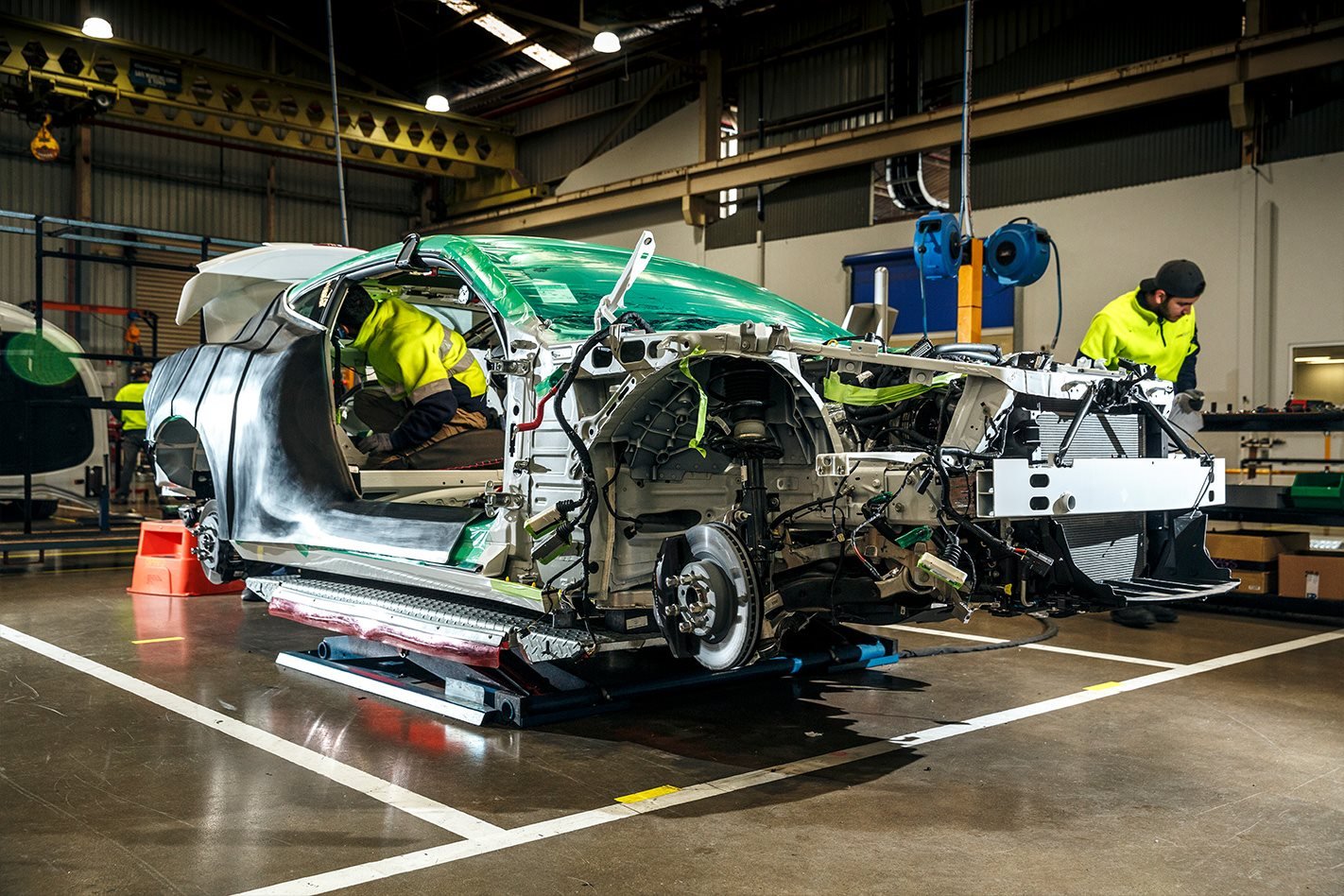THE VIEW from the staff canteen at HSV’s Clayton plant is enough to put a little lump in your throat.
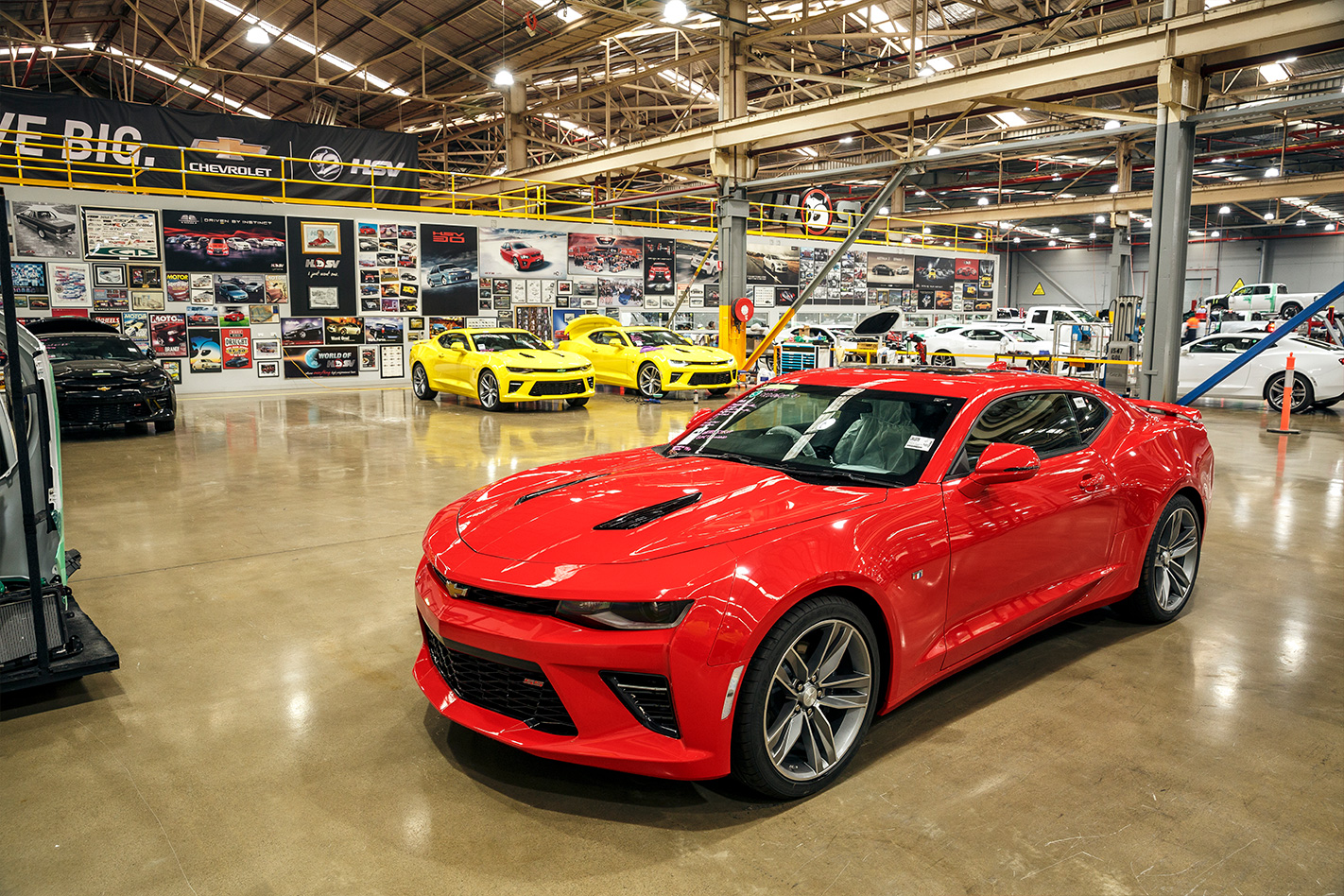
The death of Australian car manufacture has been the bad news story that’s rarely stopped giving over the past few years, but the sight of Aussies turning out new cars – and rear-drive V8 coupes at that – is more than enough to tug at the heart strings. Agreed, this is a long stretch from dinky-di football, meat pies, kangaroos and Holden cars but the right-hand-drive re-engineering work on Chevrolet’s Camaro is as close as we get at the moment.
HSV’s managing director Tim Jackson winces visibly if you call it conversion and, after appreciating the work that goes into switching the wheel from left to right, it’s easy to see why. The cars are stripped back to their barest essentials, with only front and rear glass, rear suspension assembly, differential and fuel tank left in place. Out comes the car’s harness, running along its backbone like a multiplexed spinal cord, employees clambering over the shell, carefully laying out the car’s vital organs on gurney-like trolleys. We’re under strict instructions not to disturb their work, as HSV is currently polishing its process analysis in a bid to reduce the 130 man hours per unit down to around 60 or 70, doubling production throughput from six to 12 cars per day.
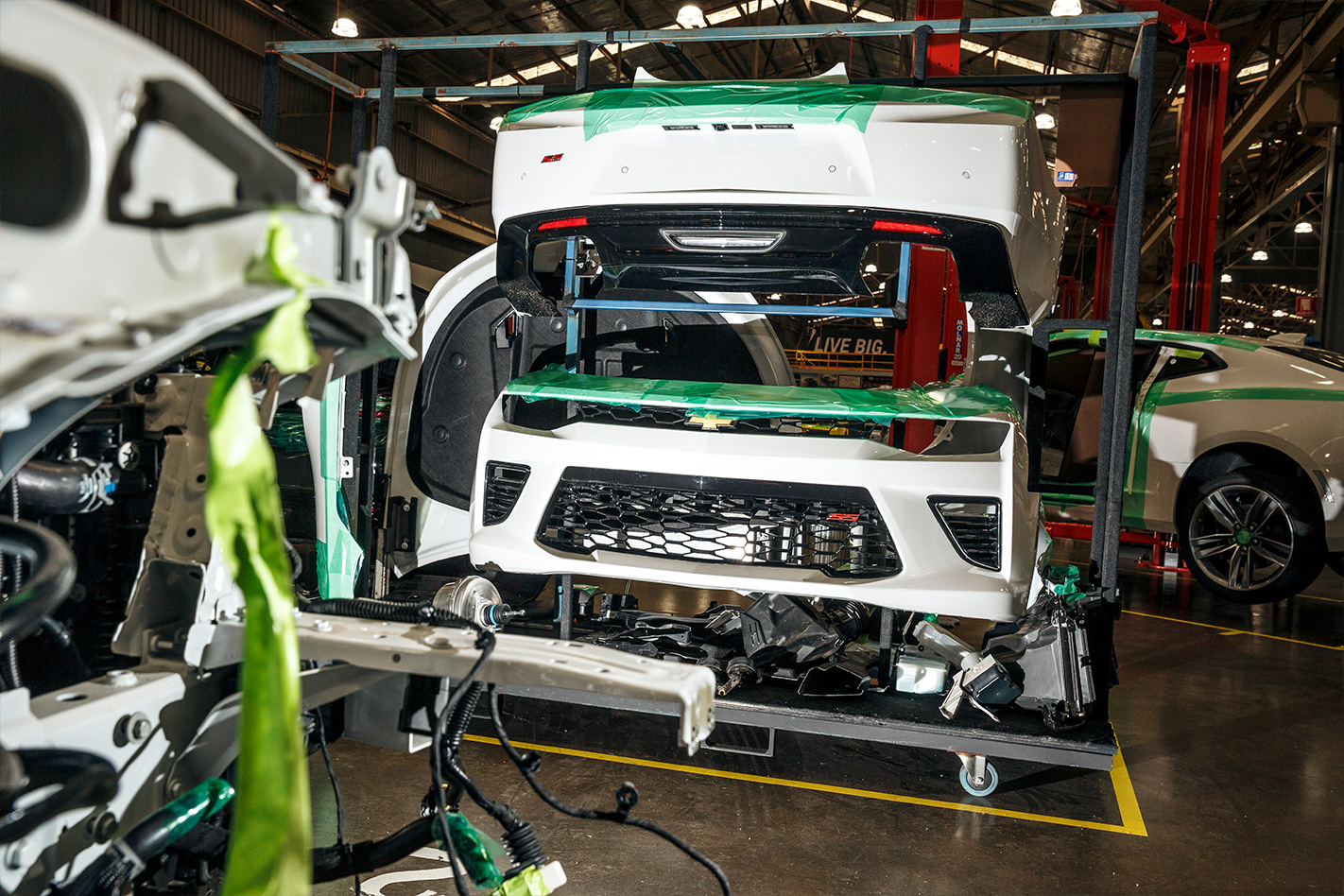
Engineering director Joel Stoddart talks us through the genesis of the project. “It was April 2016 when we got the approval for study from our organisation so we dedicated some money to purchase a car to do a study on it,” he explains. “A blue car arrived in August 2016 and we started some of our engineering work, pulling it apart and getting an understanding of what would be involved converting this car. That was when we started what we call the back-of-the-envelope business cases.”
Until that point much of the analysis was best guess. “By March 2017 we were issued math – or CAD – data, and that’s when the engineering can really get started. A huge engineering resource was started, and 357 new components are designed, developed and sourced for this program,” he says.
Look carefully at the ducting atop the Camaro’s 6.2-litre lump and it’s all HSV branded stuff. “A really important milestone for the program was September last year. We sent over six or seven engineers to the US to meet with the Camaro team. The Chief Engineer, his subject matter experts, his design-responsible engineers and his specialist engineers were all in a room to meet with us and see how our program was progressing. Just before that we sent over all our CAD data and all our questions we had for them.GM’s a huge organisation so you can’t just fire off a question at one person and think it’s going to get answered.” Cue the wry smile, obviously born from experience.
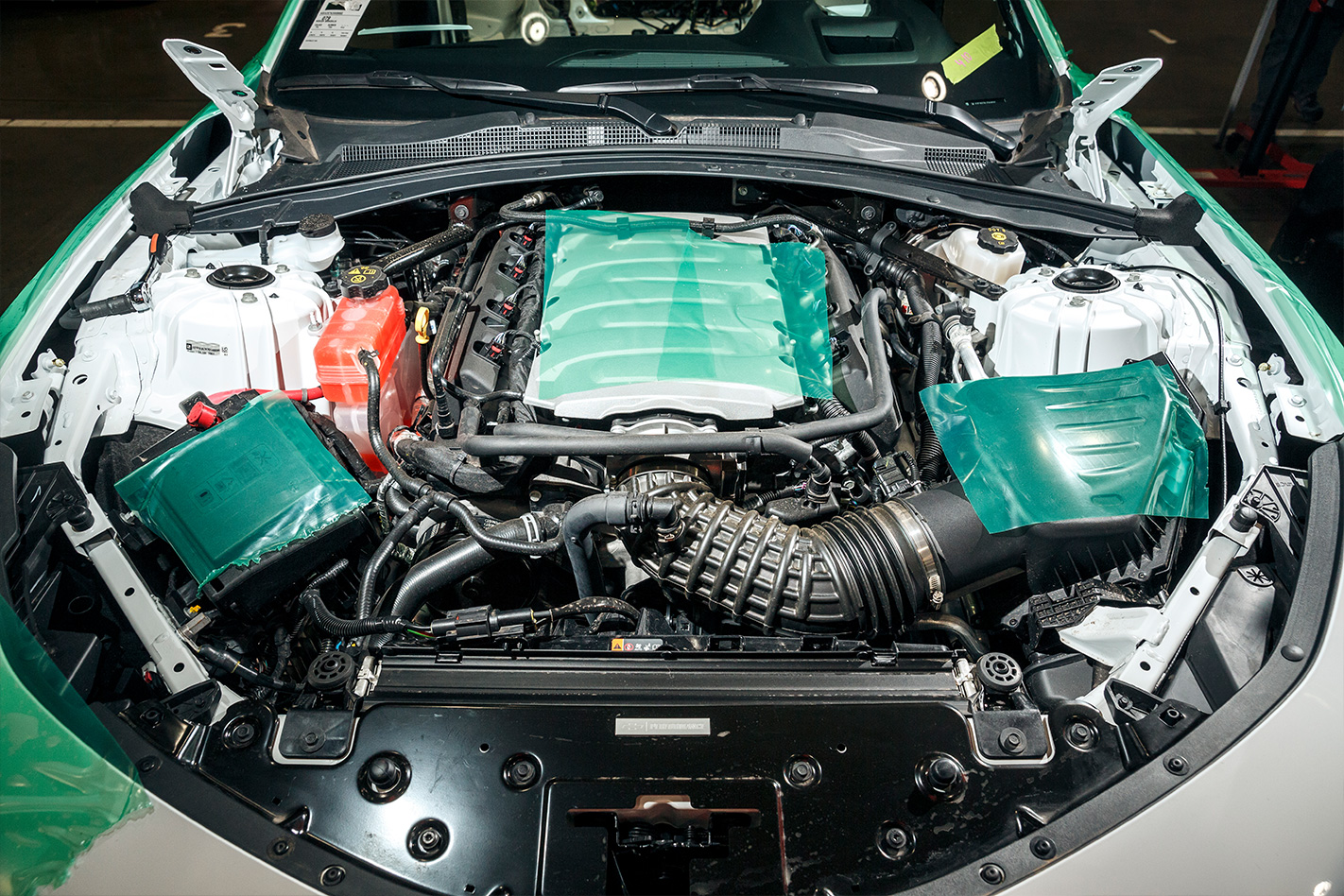
“It was pretty daunting. We had one steering engineer; they had four or five. We had one software engineer; they had lots. It was from then that we realised the program had a lot of support and momentum and we were heading in the right direction.
“Fast forward to June of this year and our ‘offline pilot’ vehicles started coming out of our workshops – you might have seen or heard of them on rumour files,” he smiles. “Those four cars are making their way around Australia on a big lap. We’ve got engineers and employees flying around the country catching up with these [durability test] cars.
“In June/July of this year, we sent four cars to a lab to be crashed; they were built on the line and just about 100 percent representative of what’s going to go out in the market. It was pretty heartbreaking.

The program manager was there and he had some restless nights leading up to that. We just gained certification this week. We’re trying to start production in September and get cars out to the public so that’s a fairly important milestone. If we’d missed that, it throws the whole program out of whack. It’s the first time we’ve done a full crash program for a car that we’ve submitted for ADRs. We’ve done it in the past maybe for verification. We do all the predictive analysis; maybe crash one car to verify that it’s okay. With this car we had to do all four crashes and we submit that to the government, so we’re proud of what we’ve achieved.”
HSV has every right to be proud. Under the stewardship of the Walkinshaw Group, the business is in transformation, moving earlier this year from its slightly dog-eared old Nissan plant to a shiny 28,000m facility around the corner that can easily house the Camaro line alongside those for Silverado, SportsCat and RAM trucks. Some 51 staff work on the Camaro line and more are set to be recruited. Wander around the staff car park and you’ll understand why HSV has such a motivated workforce. You only have to see what they drive to know they’re people like us. And they’ll need to be engaged. The old product cycle of HSV products being planned around the relatively leisurely cadence of Commodore iterations has been transformed into one new vehicle every seven to eight months. Jackson makes no bones that this project is, in many regards, a proof-of-capability exercise to GM that could well see other Camaro variants proliferate.
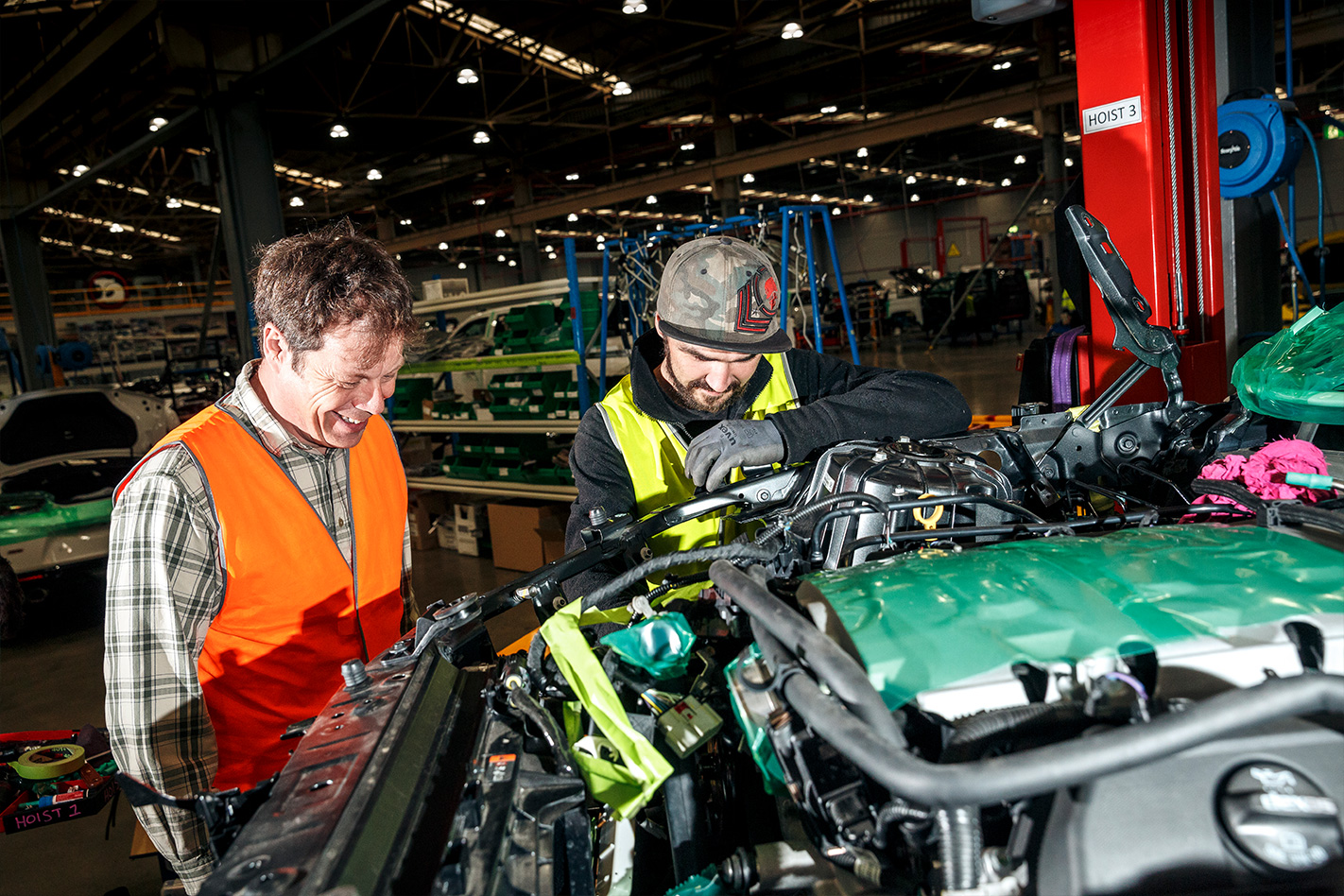
Stoddart highlights another recent acquisition; an F1-standard seven-post hydraulic shaker rig. Some serious investment has gone into this program and some basic maths suggests that it’s not about to be recouped on this model’s run. Tim Jackson admits that margins on the Camaro are thin, even at the $85,990 price point. “The margin on this car for us is not great, but if I look at it as a system between Holden, ourselves and our dealer network, there’s a willingness and desire for the car to be in the market and for customers to experience it.
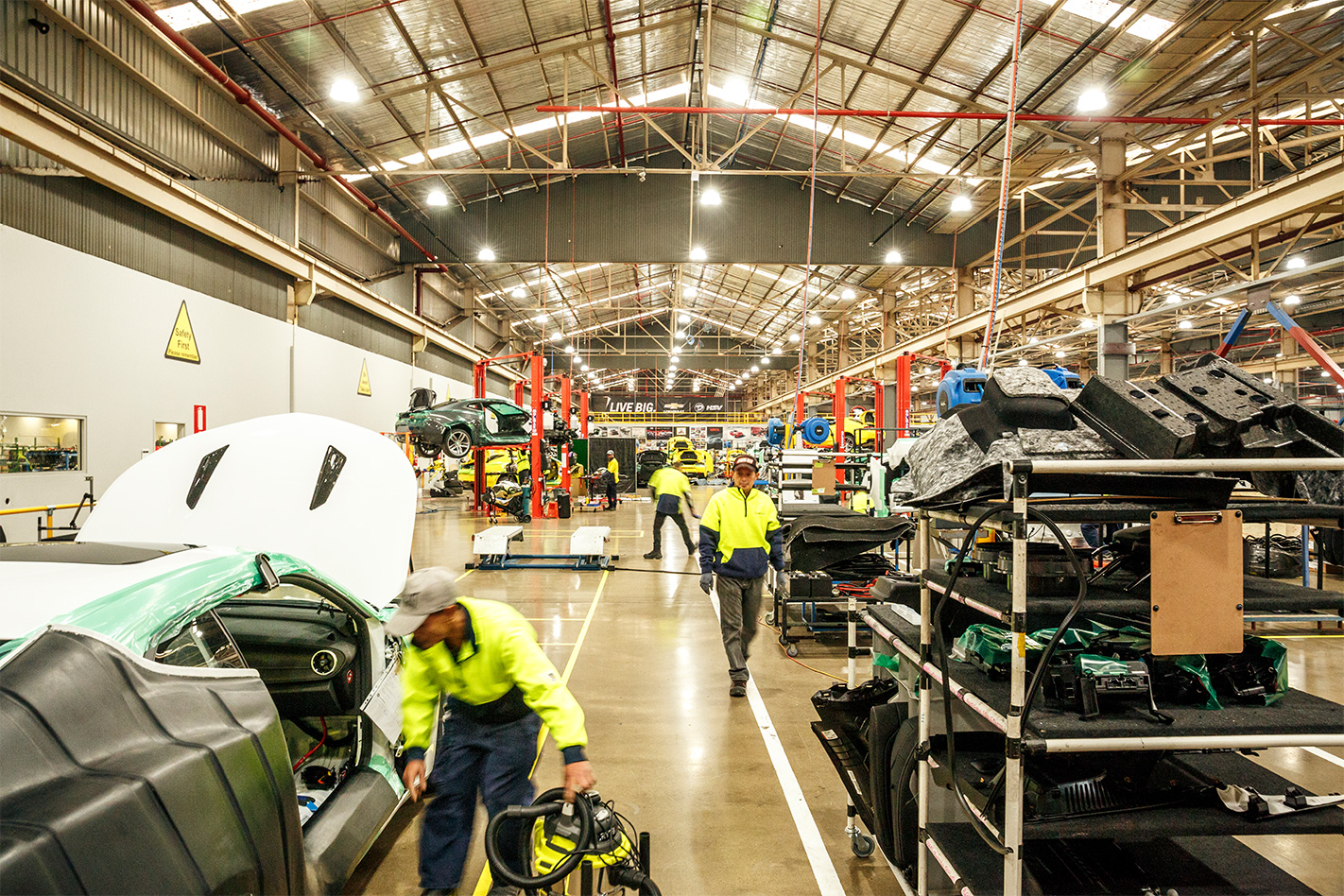
“Not including the testing equipment that we’ve brought on board, as a stand-alone program, the Camaro is at least $10m worth of work across joint development, engineering time, crashing cars and so on. We can find ways to make niche solutions come to life,” he says.
Warming to the theme, Jackson highlights a tantalising next step, namely that low-volume models like the supercharged Camaro ZL1 are certainly on the table. “One of the things about our business model is that we can bring something like that to market. It might only be 300 or 400 vehicles per year but we can make that work. The buyer for this is the HSV and the GM faithful.”

Is the Camaro project that perfect blend of science and faith? We’re not sure yet but the swollen order books suggest that Australia’s clasping this one to her bosom as if it’s one of her own. Now it’s time to see if the product lives up to the billing.


